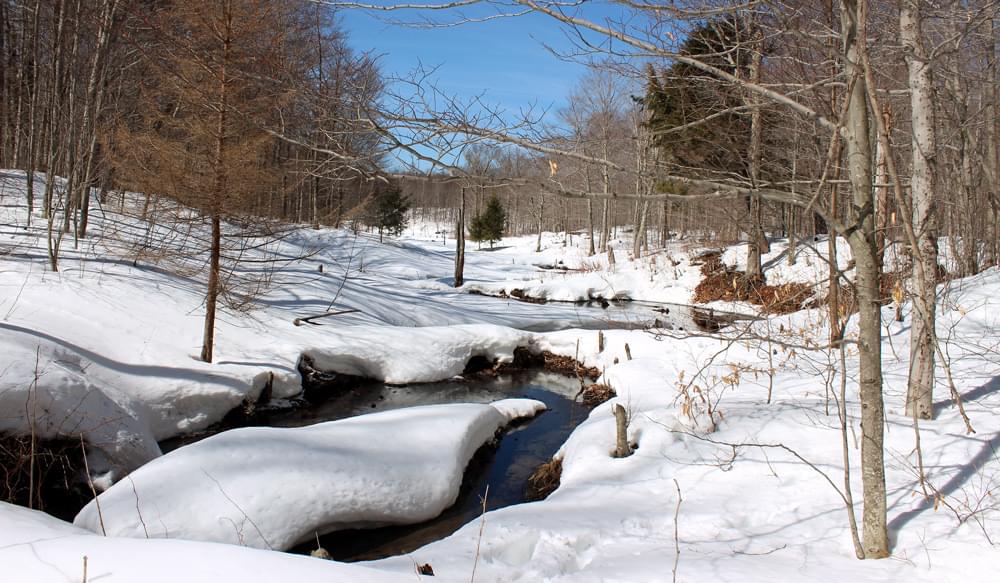Climate Change Impacts

Climate change affects the physical environment and the chemical composition of water in Lake Champlain. Flooding and other changes in the physical and chemical environment put highly adaptive invasive species at an advantage over native species. Climate change coupled with the potential spread of invasive species is the largest threat to the Lake Champlain Basin’s biodiversity. Many climate change impacts to water quality also affect fish and wildlife.
Impacts on Fish and Native Species
With less snow melt in the spring, lake and groundwater levels are reduced, altering natural fluctuations in water levels that are necessary to maintain healthy wetlands and support spawning habitat for some fish and amphibians. Shorter winters disrupt the breeding cycle of certain migrating waterfowl, and increases the overwinter survival of some nuisance species such as mosquitoes and ticks. Higher water temperatures threaten Lake Champlain’s capacity to support native cold-water fish species. In many parts of North America, warmer water temperatures have reduced the spawning success of native cold-water fish, including salmon and trout, and cool-water fish such as walleye and northern pike. Warm-water fish species (bass and invasive white perch) have increased. Fluctuations in species populations disrupt ecosystem dynamics and could affect the recreational fishing industry, an important component of the Lake Champlain regional economy.
Increasing Risk for New or Invasive Species
While native species face an uncertain future, invasive species are expanding their territories. A warmer climate means that species that previously could not survive Lake Champlain winters are now moving into the area and potentially out-competing natives. Species of particular concern include Eurasian ruffe, Hydrilla, Quagga Mussels, Round Goby, and Fishhook & Spiny Water Fleas.